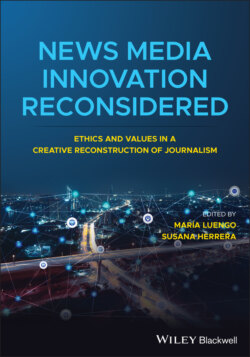Читать книгу News Media Innovation Reconsidered - Группа авторов - Страница 24
Automated Journalism
ОглавлениеArtificial intelligence (AI) systems are tools built by people to meet human needs and purposes. Data mining algorithms can influence the way journalists cover any topic, ranging from voting patterns to the spread of COVID-19 or the consumption of supermarket products. In addressing how journalists interact with AI, there is an opportunity for hybridization in the development of processes that involve journalists and technology. Algorithms often complement, but rarely replace the journalist. According to some studies (Dörr, 2016), an algorithm could replicate only 15% of the reporters’ time and 9% of the editors’ time.
To date, most news-writing robots have been used to provide news on topics such as stock market quotes, earthquake alerts, and sport. In the United States, The Associated Press leads the use of robots in business and sports news. The automated Heliograf system writes stories for The Washington Post, while the Swedish multimedia group MittMedia produces pieces written by robots on real estate issues, among others. Newsrooms are increasingly automated to track down breaking stories and trending issues. The rapid development of machine learning is likely to make journalism more speedy, efficient, and cost-effective (Diakopoulos and Koliska, 2017).
We must consider whether automated journalism can play a role of responsibility as humans do. There are concerns regarding the algorithmic strategies, personalization of contents, filtering, and transparency. As computers assume greater prominence in the evaluation of the news, encouraging a certain type of selection and consumption, how are they “taught” to act ethically? Is there an “algorithm ethic?”
Ethics must unravel numerous dilemmas about the selection, interpretation, and anticipation of news content, including how algorithms structure reality through machine learning. Therefore, it is necessary to study the codes, the “black boxes” of the algorithms, to discover “the power structures, biases and influences that computational artifacts exert in society” (Diakopoulos and Koliska, 2017, p. 815).
